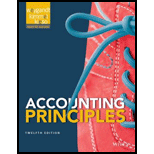
Concept explainers
(a)
Variances: The variances are used to calculate the variation in actual cost by comparing it to the
Total Material Variances: The variance which is used to determines the variationin actual direct material by comparing it to the standard direct material.
Material Price Variance: The variation in actual price and the standard price is called material price variance. It is the difference of actual amount paid for material and the standard amount that should have been paid for the material.
Material Quantity Variance: The variation in the actual quantity times the standard price and standard quantity times the standard price for the material is called material quantity variance.
Total Labor Variance: The total labor variance is the variation in the amount actually paid for the labor and the amount that must have been paid for labor. It is the sum of labor price variance and the labor quantity variance.
Labor Price Variance: The variation in the wage rate paid to workers and rate that was expected to be paid to the worker is called labor price variance.
Labor Quantity Variance: The variation in the amount that should have been paid for the hours worked and the amount that must have been paid for the amount of hours that should have been worked is called labor quantity variance.
To determine: The total, price and quantity variances for materials and labor.
(b)
To identify: The two possible explanations for each of the unfavorable variances and the responsibility for the unfavorable result might be placed.
Trending nowThis is a popular solution!

Chapter 25 Solutions
Accounting Principles - Standalone book
- Iguana, Incorporated, manufactures bamboo picture frames that sell for $30 each. Each frame requires 4 linear feet of bamboo, which costs $2.50 per foot. Each frame takes approximately 30 minutes to build, and the labor rate averages $14 per hour. Iguana has the following inventory policies: Ending finished goods inventory should be 40 percent of next month’s sales. Ending direct materials inventory should be 30 percent of next month’s production. Expected unit sales (frames) for the upcoming months follow: March 295 April 290 May 340 June 440 July 415 August 465 Variable manufacturing overhead is incurred at a rate of $0.20 per unit produced. Annual fixed manufacturing overhead is estimated to be $9,000 ($750 per month) for expected production of 5,000 units for the year. Selling and administrative expenses are estimated at $800 per month plus $0.50 per unit sold. Iguana, Incorporated, had $11,800 cash on hand on April 1. Of its sales, 80 percent is in cash. Of the…arrow_forwardI am looking for the correct answer to this general accounting problem using valid accounting standards.arrow_forwardI am trying to find the accurate solution to this general accounting problem with appropriate explanations.arrow_forward
- Scarlett Manufacturing uses the number of machine hours to allocate overhead costs to products. In a typical month, 8,400 machine hours are expected, and the average monthly overhead costs are $7,560. During March, 8,100 machine hours were used, and total overhead costs were $7,290. Required: Compute Scarlett's predetermined overhead rate and the amount of applied overhead for March. Round your answers to the nearest cent.arrow_forwardHello tutor please given General accounting question answer do fast and properly explain all answerarrow_forwardI am looking for the correct answer to this general accounting question with appropriate explanations.arrow_forward

 AccountingAccountingISBN:9781337272094Author:WARREN, Carl S., Reeve, James M., Duchac, Jonathan E.Publisher:Cengage Learning,
AccountingAccountingISBN:9781337272094Author:WARREN, Carl S., Reeve, James M., Duchac, Jonathan E.Publisher:Cengage Learning, Accounting Information SystemsAccountingISBN:9781337619202Author:Hall, James A.Publisher:Cengage Learning,
Accounting Information SystemsAccountingISBN:9781337619202Author:Hall, James A.Publisher:Cengage Learning, Horngren's Cost Accounting: A Managerial Emphasis...AccountingISBN:9780134475585Author:Srikant M. Datar, Madhav V. RajanPublisher:PEARSON
Horngren's Cost Accounting: A Managerial Emphasis...AccountingISBN:9780134475585Author:Srikant M. Datar, Madhav V. RajanPublisher:PEARSON Intermediate AccountingAccountingISBN:9781259722660Author:J. David Spiceland, Mark W. Nelson, Wayne M ThomasPublisher:McGraw-Hill Education
Intermediate AccountingAccountingISBN:9781259722660Author:J. David Spiceland, Mark W. Nelson, Wayne M ThomasPublisher:McGraw-Hill Education Financial and Managerial AccountingAccountingISBN:9781259726705Author:John J Wild, Ken W. Shaw, Barbara Chiappetta Fundamental Accounting PrinciplesPublisher:McGraw-Hill Education
Financial and Managerial AccountingAccountingISBN:9781259726705Author:John J Wild, Ken W. Shaw, Barbara Chiappetta Fundamental Accounting PrinciplesPublisher:McGraw-Hill Education





